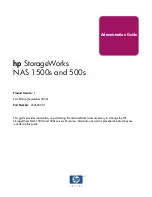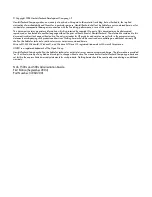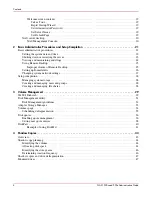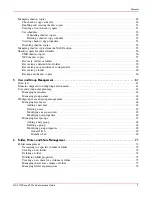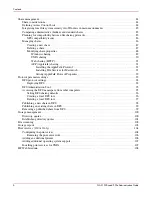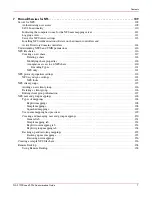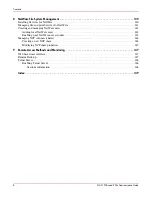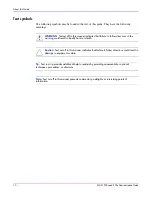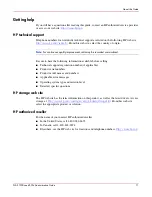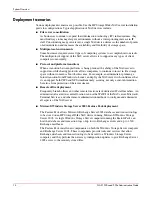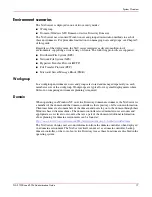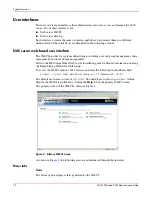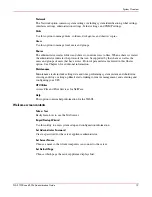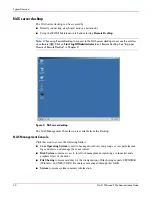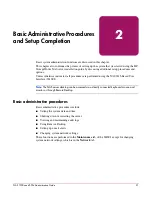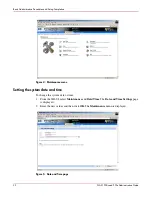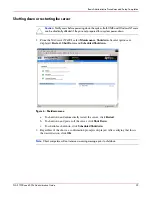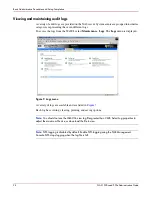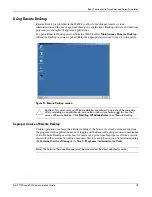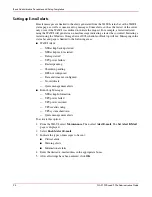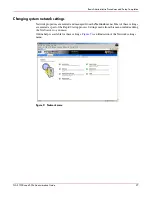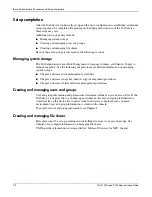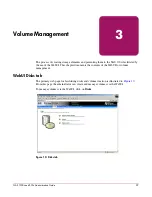
System Overview
14
NAS 1500s and 500s Administration Guide
Product manageability
The NAS server ships with the following utilities and features that ease the administration
tasks associated with managing the system:
■
The Rapid Startup Wizard is a user friendly configuration utility that ensures easy
configuration.
■
The WebUI is a simple, graphical user interface (GUI) that helps with administration
tasks.
■
Ability to connect directly to the console.
Product redundancy
The NAS server is specifically designed to perform file serving tasks for networks, using
industry standard components to ensure reliability.
Other industry standard features, such as redundant array of independent drives (RAID) and
remote manageability, further enhance the overall dependability of the NAS server.
To ensure redundancy and reliability, the hard drives installed in the NAS server are configured
so that a single drive failure will not cause data loss or system failure. The NAS server is
configured with dual boot capability. When powered on, the NAS server can boot using a
primary OS or a secondary recovery OS.
The primary OS logical drive resides on disk 0 and is mirrored on disk 1 while the secondary
OS logical drive resides on disk 2 and is mirrored on disk 3. If a single disk failure occurs, the
system will still function off the mirrored disk. If the primary OS becomes corrupted and
un-bootable, the secondary OS is available for data backup prior to using the Quick Restore
DVD to restore the system to the factory default state.
The data volume is configured as a RAID 5 volume across all four drives. This ensures
redundancy in the event of a drive failure. The data volume is accessible by both the primary
OS and secondary OS.
Figure 1: Hardware RAID
Note:
In Adaptec Storage Manager, logical disks are labeled 1, 2, and 3. In Disk Manager, logical
disks are displayed as 0, 1, and 2.
Physical Drive 0
Physical Drive 1
Physical Drive 2
Physical Drive 3
15133
Logical Disk 1
Primary Operating System Disk
RAID 1
Logical Disk 2
Secondary Operating System Disk
RAID 1
Logical Disk 3
Data Volume
RAID 5

